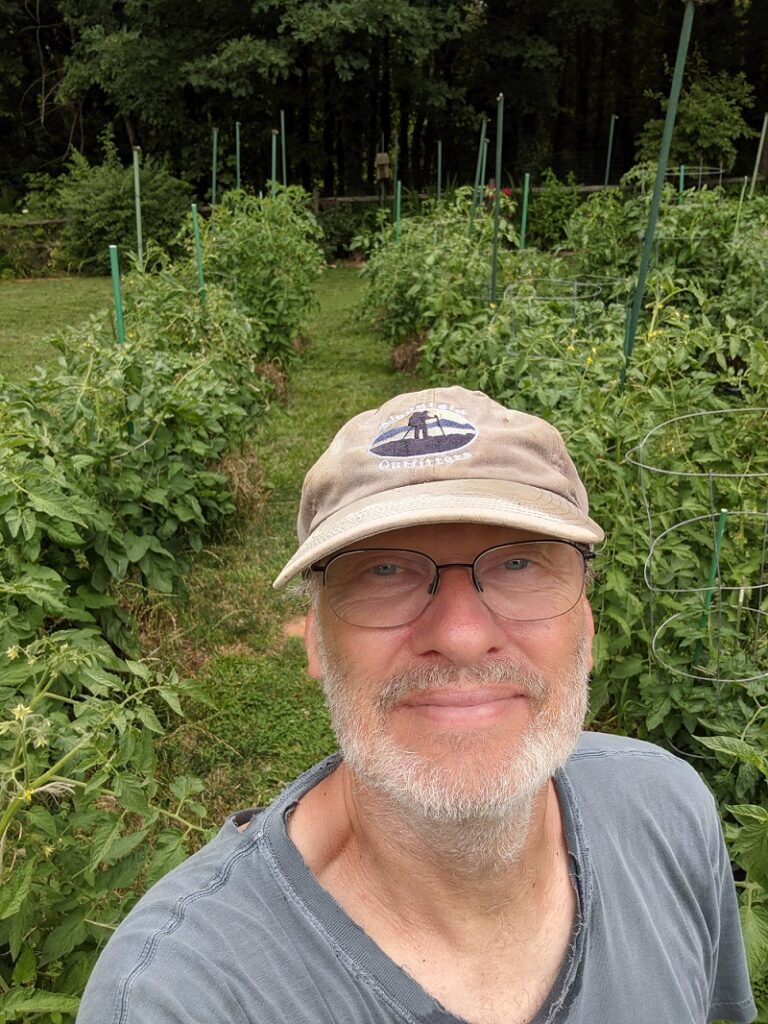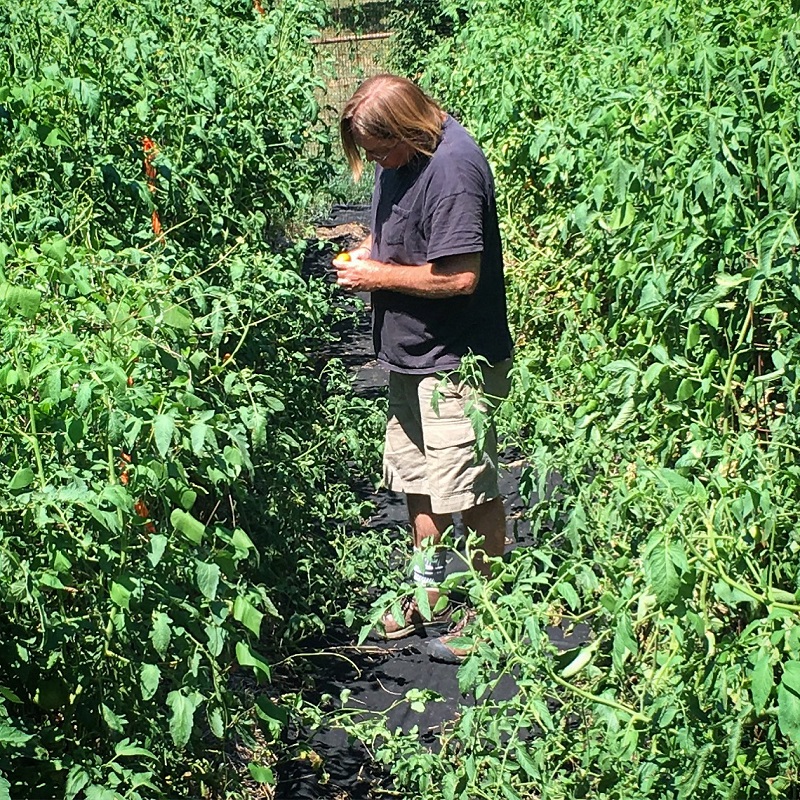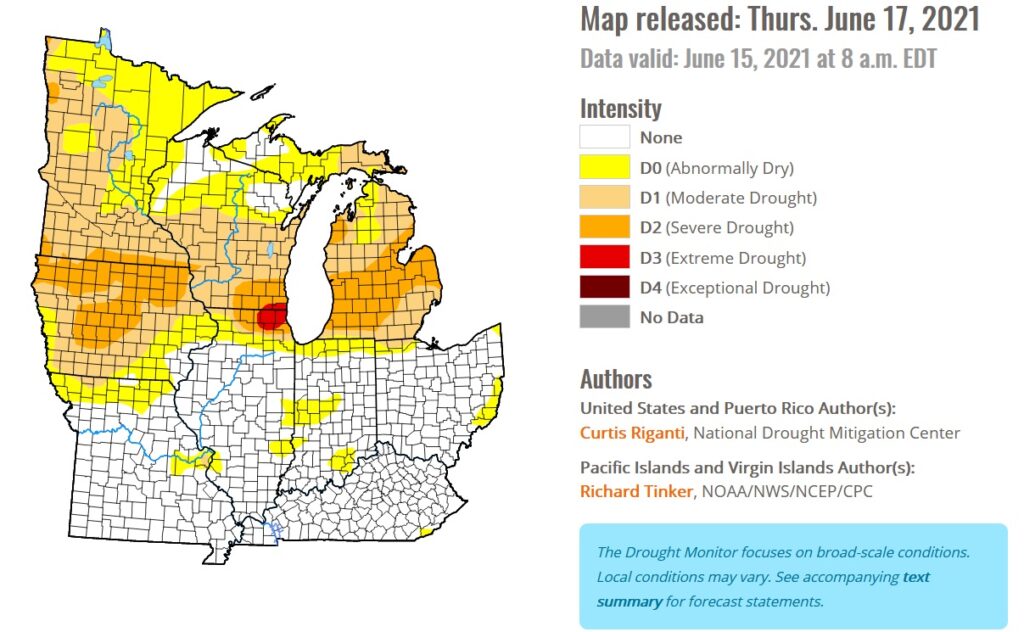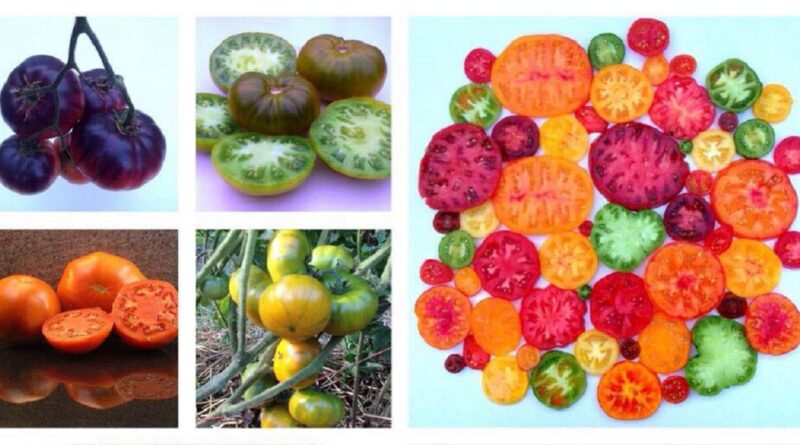Tomatomania III: The Looming Drought
Podcast: Play in new window | Download (Duration: 2:01:20 — 57.5MB)
Subscribe: Apple Podcasts | Spotify | Android | iHeartRadio | Podchaser | Email | TuneIn | RSS | More
(June 20, 2021) Exactly one year ago, we were in the midst of a worldwide pandemic. Now, we’re…um, okay? It’s hard to say. But COVID-19 didn’t stop us from celebrating Tomatomania II. Today, we welcome Tomatomania III. Two of our favorite tomato guys are back to talk shop and offer growing advice. However, as the headline indicates, 2021 presents its own challenges. Many parts of the country can’t buy a decent rain. So, let’s get to our guests.
Craig LeHoullier, aka NC Tomatoman

We start Tomatomania III with gardener, educator and author Craig LeHoullier. He writes,
Through the years, I’ve been known as NC Tomatoman. Some know me as the fellow who named Cherokee Purple in 1990. To others, I am the author of the books Epic Tomatoes or Growing Vegetables in Straw Bales, the co-host of Tomatopalooza, a co-leader of the Dwarf Tomato Breeding Project, or just the odd person with a garden where the driveway used to be. I am the tomato nut with a website, a blog, a newsletter (on occasion), and a huge tomato and pepper and eggplant collection. Really, all I am is Craig LeHoullier – someone that heirloom tomatoes chose to help participate in their continued relevance.
By the way, he recently teamed with Joe Lamp’l to create an online course called “Growing Epic Tomatoes” (what else?). Yes, there is tuition. But the course is getting a lot of praise, and a lot of attendees.
Keith Mueller, aka KC Tomato

Tomatomania III would not be possible without Keith Mueller, or KC Tomato, a horticulturist living in Kansas City (Missouri). But he doesn’t grow and breed just tomatoes. His work breeding many kinds of plants stretches over 30 years. Currently, he works on several cooperative breeding projects. Mueller is helping to develop vegetable varieties for the Midwest specifically adapted to organic conditions. The project is funded through the USDA’s Organic Agriculture Research and Extension Initiative (OREI) and involves several universities like the University of Wisconsin, the Organic Seed Alliance and Seedlinked. He also works with Dr. Randy Gardner to develop plants with multiple disease resistant traits and heirloom qualities.
By the way, NC Tomatoman and KC Tomato are long-time friends, too.
About that drought…
One thing that can stand in the way of Tomatomania III is the drought of 2021. We will discuss that with our tomato guys and also with meteorologist Rick DiMaio today. The New York Times states,
Global warming, driven by the burning of fossil fuels, has been heating up and drying out the American West for years. Now the region is broiling under a combination of a drought that is the worst in two decades and a record-breaking heat wave.
“The Southwest is getting hammered by climate change harder than almost any other part of the country, apart from perhaps coastal cities,” said Jonathan Overpeck, a climate scientist at the University of Michigan. “And as bad as it might seem today, this is about as good as it’s going to get if we don’t get global warming under control.”

Compared to the American West, the Midwest isn’t in dangerous territory…yet. But, as you can see from the map, there’s reason for concern. DiMaio says the current drought map will most likely change for the better due to two rounds of rain, June 11-12 and June 18. Rain this weekend could ease the situation even more.
About watering
Regardless of weather you live in a drought area, consistent watering is a key to successful tomato growing. Niki Jabbour, who has been on our show several times, has some good advice in this article (which also features Craig LeHoullier.)
Garden-grown tomato plants need to be watered less often than those planted in containers, especially if the plants are mulched. As noted above, frequency of watering depends on weather and soil type, but also on whether you grow in raised beds or an in-ground garden. Raised beds tend to dry out quicker than in-ground garden beds.

The tomato plants in my raised beds are watered weekly in summer, unless the weather has been cloudy and wet. Mulching the soil around my tomato plants with a three inch layer of straw improves moisture retention and means I don’t need to water as often.
Another factor to consider is the stage of growth. Once my tomato plants begin to fruit in mid to late summer, particularly large-fruited heirloom varieties, I cut back on watering to help concentrate the flavors and reduce splitting and cracking.
Speaking of splitting and cracking, check out the photos on the left from Keith. That’s just some of what we’ll cover today. It’s Tomatomania III! Get your tomato questions ready.

